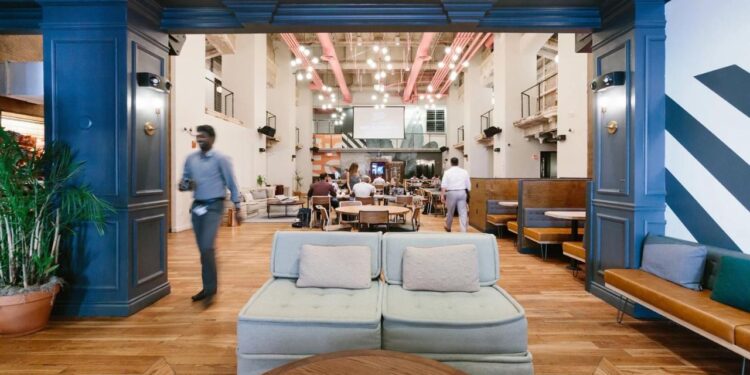WeWork is maturing its design as it attempts to support more corporate clients.
According to Ebbie Wisecarver, global head of design at the coworking firm, the company is pivoting away from its days of vivacious offices in order to meet evolving member demands.
“A lot of our older spaces had a sea of desks and no one wants that anymore,” said Wisecarver.
Now, WeWork is focusing on providing the ultimate flexible and collaborative workspaces featuring meeting spaces, lounge-style seating, and more. In fact, Wisecarver says that the firm’s collaboration-style furniture expansion will be “moving upward of 50%.”
“The reality is, as we’re moving forward, everyone’s grabbing at the solution for the post-pandemic workstyle. What we’re trying to do is offer space that can transform based on different needs.”
Wisecarver is referring to the adoption of hybrid and remote work models that companies large and small have opted for. By offering a third space, a workspace outside of the home and a firm’s headquarters, workers can achieve true flexibility.
Not only does this pivot coincide with shifting workplace trends, it also sets a precedent for a WeWork that wants to remedy its reputation. Now, the coworking operator is eager to be the go-to workspace solution for the world’s largest companies.
Prior to the pandemic, large enterprises made up just 40% of WeWork’s memberships, but that number has since climbed to 50% and is expected to continue increasing.
“While a coworking member might like the liveliness, enterprise members often want a different feel. They might [want] something more formal, or spaces that can be more easily branded,” said Wisecarver.


 Dr. Gleb Tsipursky – The Office Whisperer
Dr. Gleb Tsipursky – The Office Whisperer Nirit Cohen – WorkFutures
Nirit Cohen – WorkFutures Angela Howard – Culture Expert
Angela Howard – Culture Expert Drew Jones – Design & Innovation
Drew Jones – Design & Innovation Jonathan Price – CRE & Flex Expert
Jonathan Price – CRE & Flex Expert










